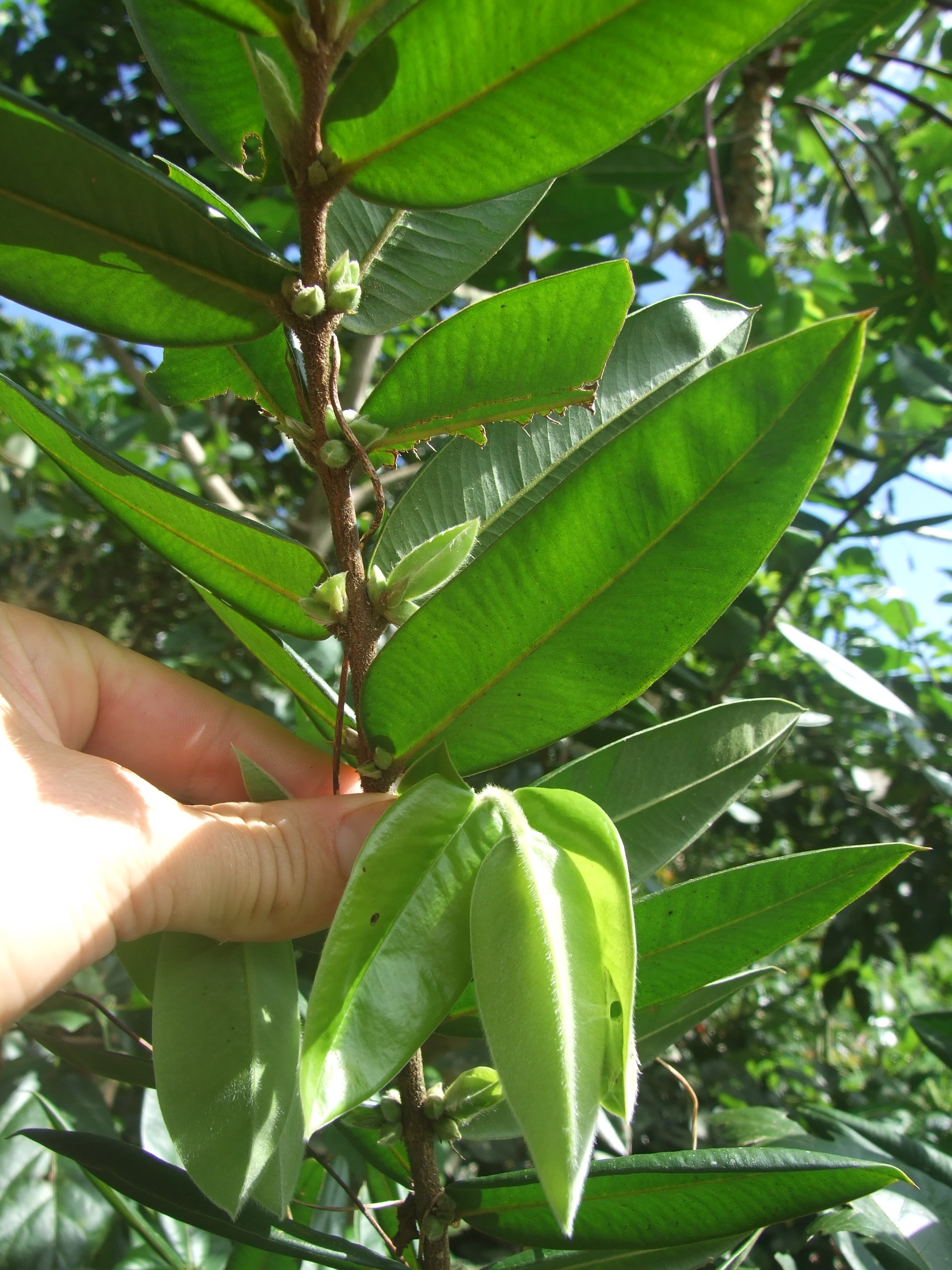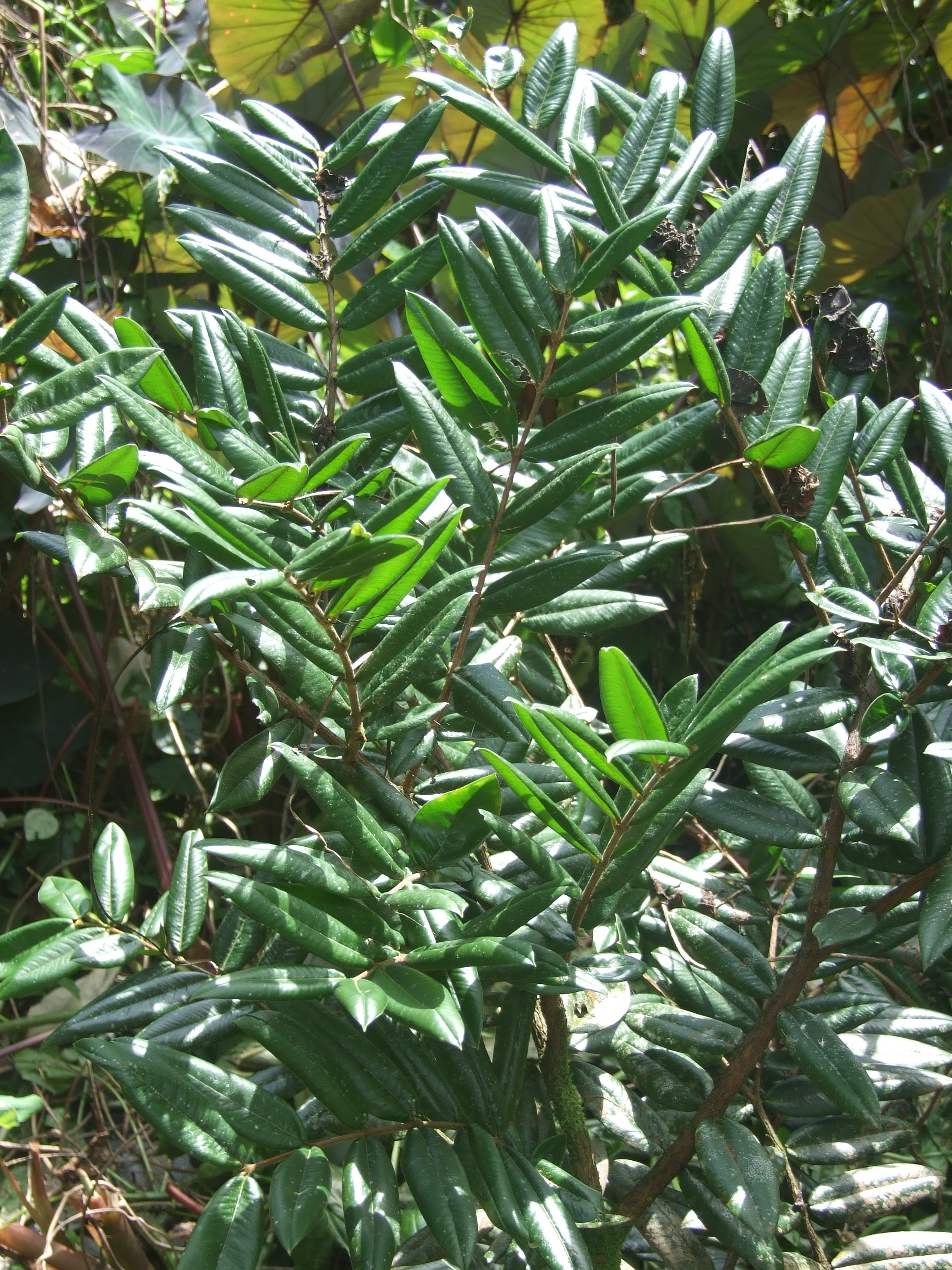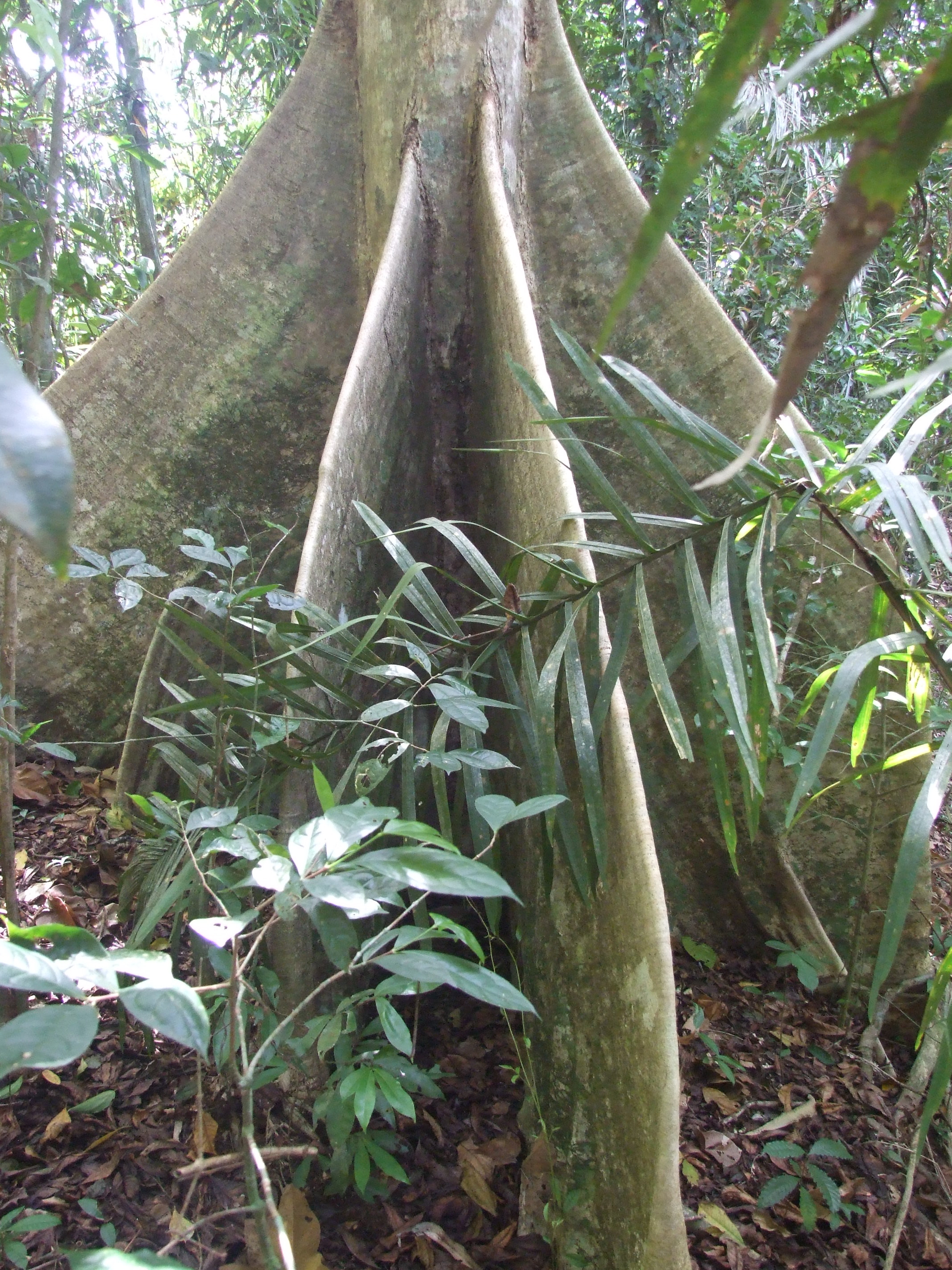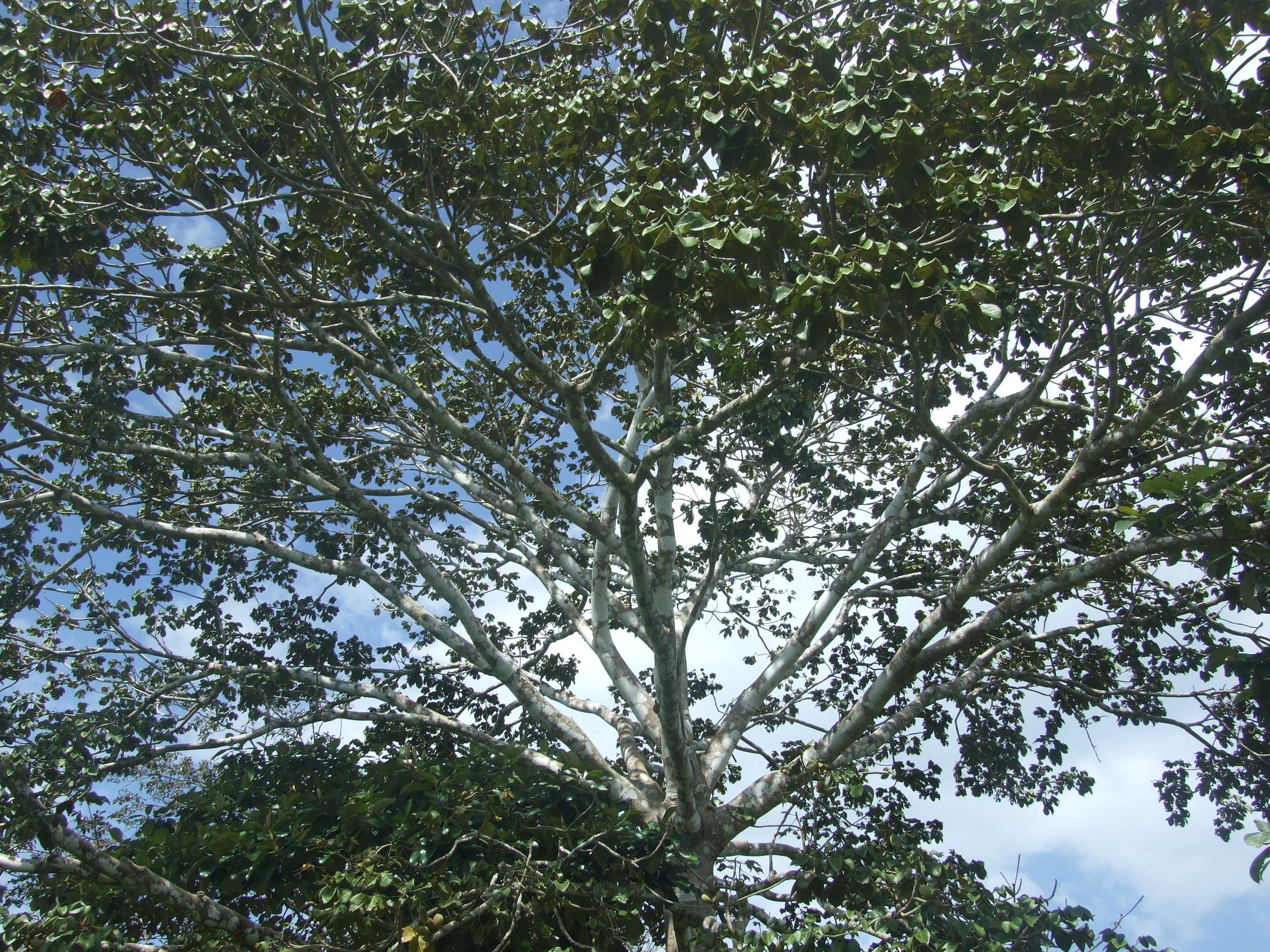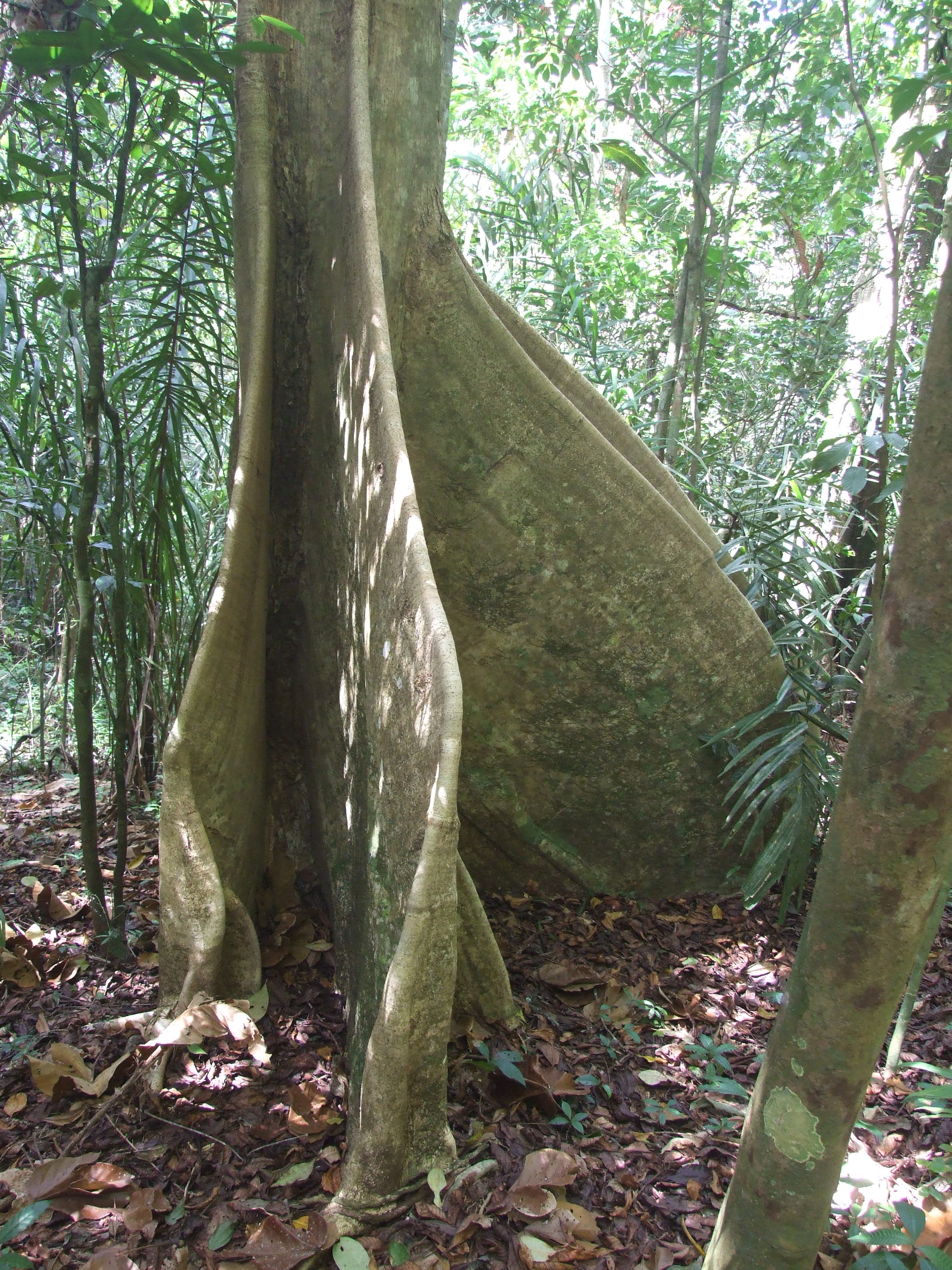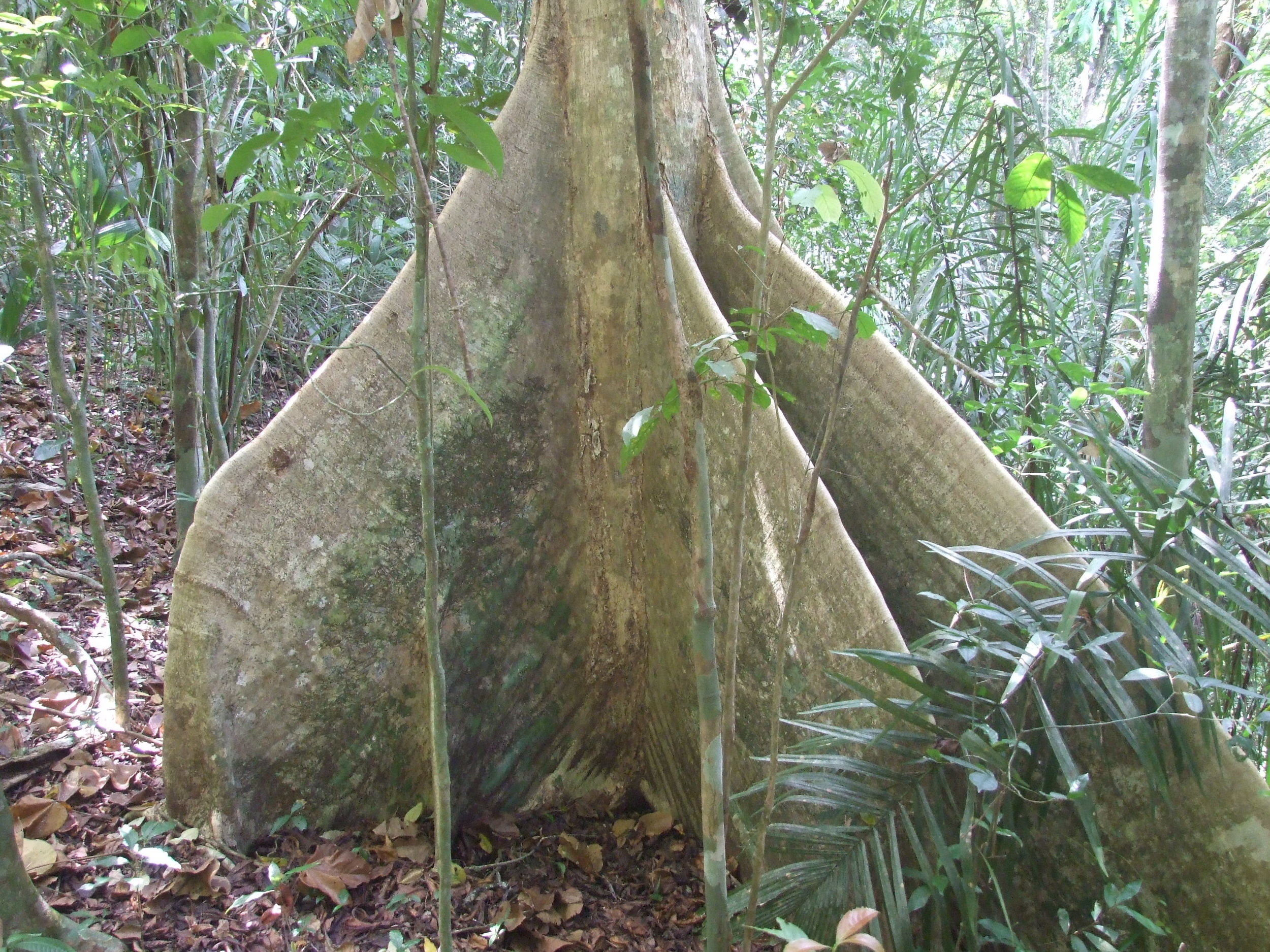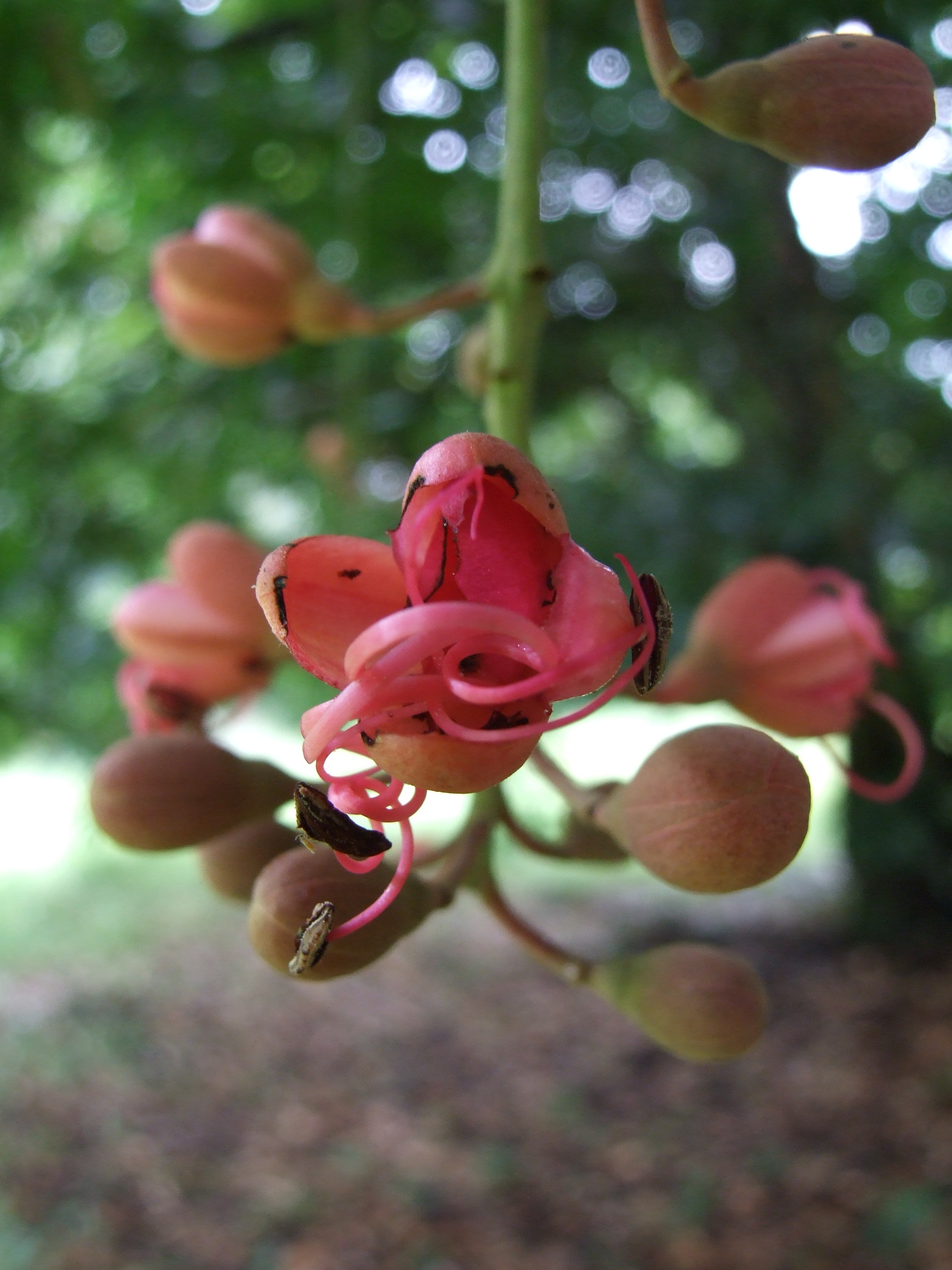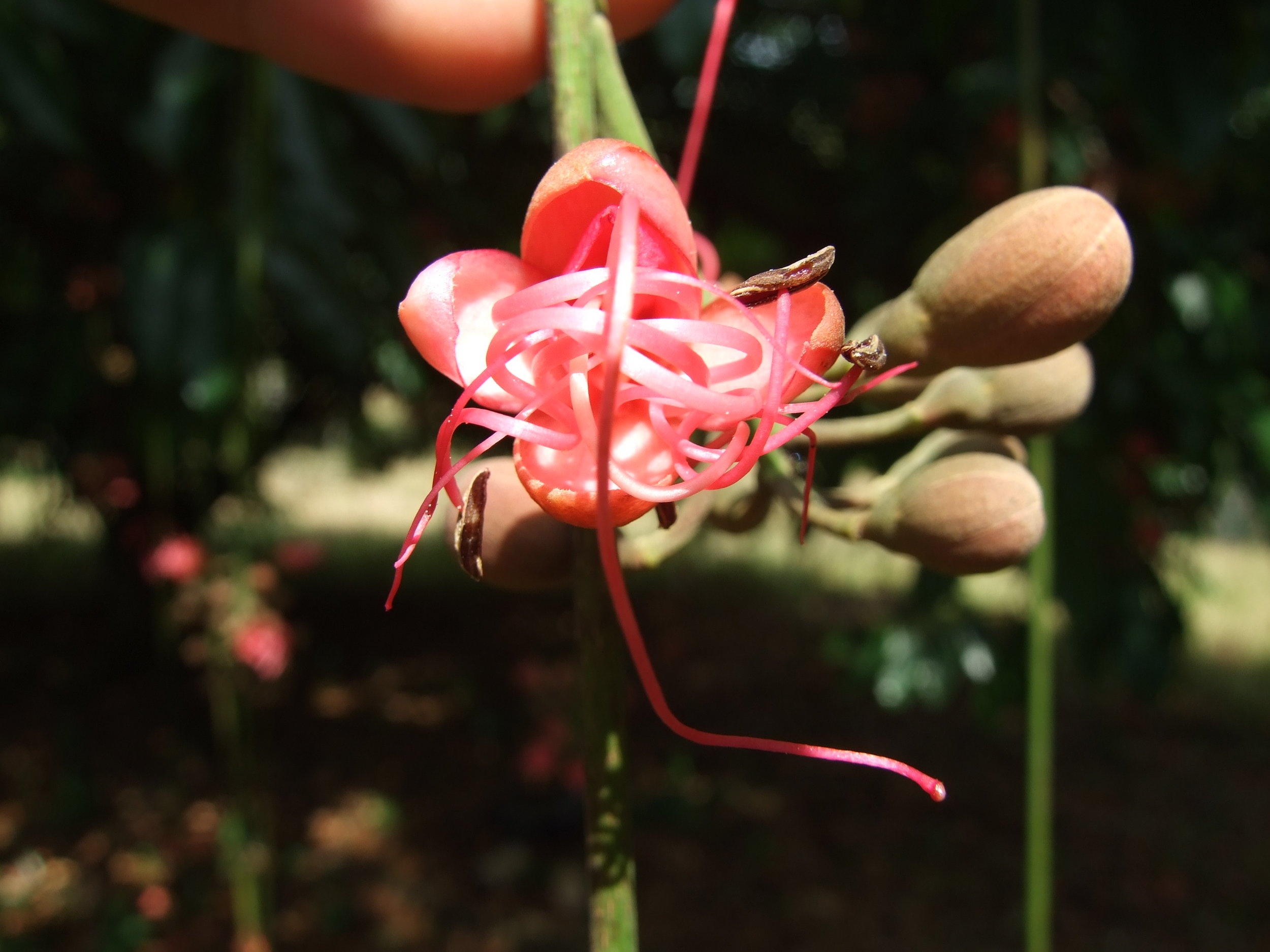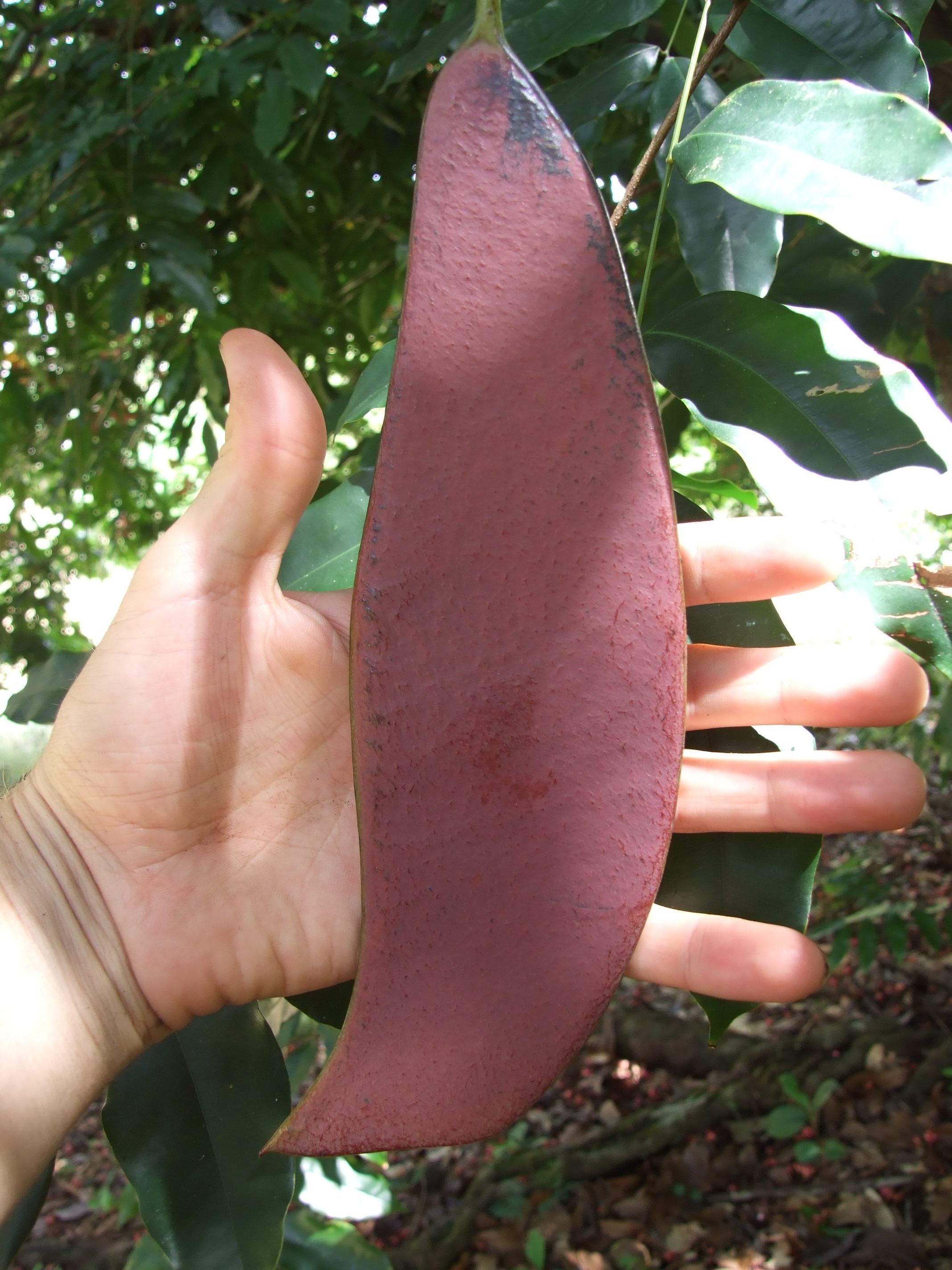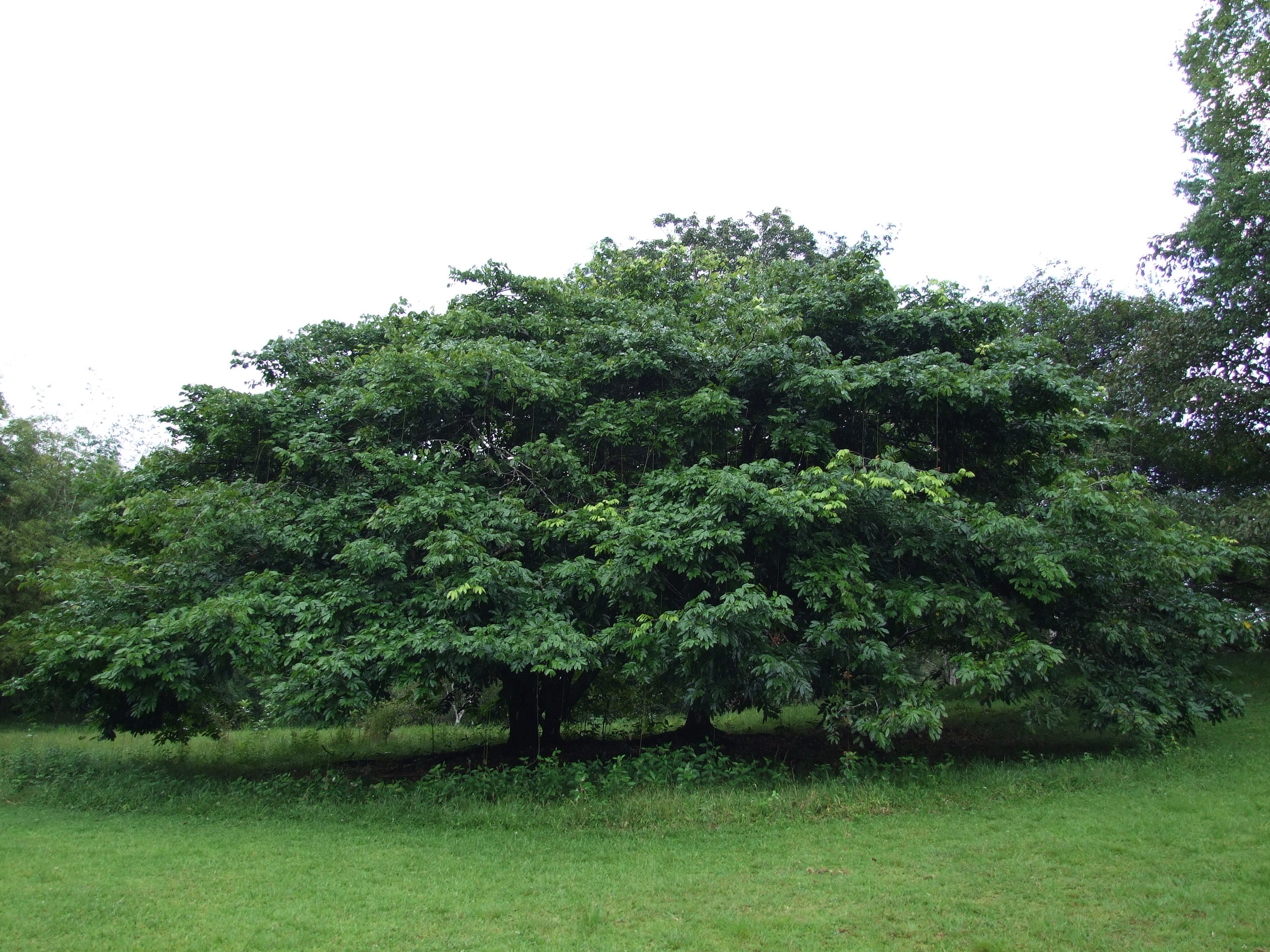Indigenous to Mexico and Central America, Sapodilla (or Chico Sapote) is a traditional food plant of the Mayan and Aztec cultures and the source of chewing gum, or chicle, chewed by the Aztecs in pre-Colombian ties, still used in some commercial gums. The tree has spread to other parts of the tropical world, becoming a minor fruit crop. Although grafted varieties can be managed low, larger trees can reach a height of 20 m. The tree is evergreen and produces round or egg-shaped fruits, which vary in size. Good varieties can be truly incredible. A good Sapodilla tastes like brown sugar, very sweet and slightly gritty like pears.
Myrciaria glazioviana - Yellow Jaboticaba, Cabelluda
Sterculia apetala -Panama Tree
Eperua falcata - Bootlace tree
BACKGROUND
Endemic to the humid, lowland forests of Guyana, northern S America, E. falcata remains largely unknown outside its place of origin. The tree can make a giant, robust forest tree, with a massive spreading canopy. Flower clusters dangle at the end of long, pendant stems, which hang down in abundance, forming a fringe below the canopy. Each inflorescence forms a fairly incredible, deep mauve-pink, woody pod containing a single seed. The pod is reminiscent in shape to a machete blade, or even more accurately, a scimitar. The pods explode upon opening, flinging their seed up to 100 feet.
USES AND ETHNOBOTANY
The resin may have slight bactericidal and antifungal properties, which account for its use as a cicatrizant (a substance that heals by inducing scarring). The resin from the bark is placed on warm leaves and tied around cuts and sores, ulcers etc as a poultice. The resin is used as a cicatrizant to heal wounds. The bark is decocted as a dental analgesic. The bitter bark is used as an emetic.
The wood yields an oil which is used as an ointment for rheumatism and to treat wounds[
The tree was considered to be the most beautiful flowering legume by the renowned Brazilian botanist Dr. Adolpho Ducke.
Artabotrys hexapetalus - Ylang-Ylang vine
Artabotrys hexapetalus is a sprawling shrub / vine in the Annonaceae family originating in India. The plant grows like a sprawling shrub that will turn in to a vine if it is given a support structure. Although not apparent in the photos, the branches have hook-like protrusions (like Una de Gato, Unicaria). These aid the sprawling branches in climbing.
Artabotrys hexapetalus leaf and fruit.
Annona spraguei
Annona spraguei is endemic to Panama and endangered in the wild. I have collected seed from wild stands in Soberania National Park, outside of Panama City in Central America.
The fruit is about the size of a fist, with a sweet edible pulp and numerous seeds. The fruit looks like a smaller version of Biriba (Rollinia deliciosa) only smaller with thinner, longer protuberances.
Rhamnaceae, Zizyphus mauritiana, Indian Jujube
Jujube is one of the five primary fruits in China, having been cultivated thereabouts for 4,000 some odd years, probably longer. The fruit is very common in parts of Asia, and increasingly so in the Medeterranian. The tree is best adapted to dry tropical climates and can be found throughout the tropics, although it is not very common outside of Asia.
The tree can reach 12 meters in height, although most of the ones I've encountered, propagated by approach grafting, are smaller, sprawling shrubs. In dry, colder areas the tree doesn't typically surpass 4 meters in height.
The Indian Jujube (Z. mauritania) and the Chinese Jujube (Z. jujuba) can be distinguished by the underside of the leaves. The underside of the Indian jujube leaves is covered with an almost cream colored fuzz. The fruit is usually the shape and size of a olive, although improved Chinese varieties can be larger than 6 cm in length. Each fruit contains a stone with two seeds.
The Jujube can be consumed in numerous ways: ripe or unripe, cooked, in sweets and jams, breads, cheeses, and a butter is prepared with the pulp. Juices are also made. In order to dry the fruits, one must wait until the process is initiated on the tree, the fruit ripens, becomes soft and then dries. The soft fruit has a higher concentration of sugars. Dried fruits are common, and can be conserved and consumed like raisins.
The wood is very strong, often used to make agricultural implements, also used to make a top quality charcol. The tree is commonly used as a living fence and windbreak in arid regions. Leaves are used as food for silkworms. The bark is used for tanning. The leaves and fruit are an excellent animal forage.
There are numerous superior grafted varieties of Chinese Jujube, including Lang, Li, Sui Men, Mu Shing hong, and Yu. There are over 125 known varieties of Indian Jujube in India, including "Gola", "Safeda", "Banarsi", and "Haichi".
High quality fruits contain up to 21% sugar, 1.5% protein, and are rich in calcium, fosforo and vitamin C.
The trees can be propagated by seed, approach grafting, cuttings and air layer.
Passiflora spp., Passiflora vitifolia
passiflora-soberania
Found this Passion flower variety in Soberania National Park, Panama. Need to go back and get a photo of the leaf.
passiflora-soberania2
Averrhoa bilimbi - Bilimbi
Bursera hindsiana (or epinnata) - Jatropha cuneata, Cercidium microphyllum, and Unidentified Shrub (forward right corner), Baja, Mexico
Two views of three small trees and a shrub. The trees are, starting from forward left hand corner in the photo directly below are: Matacora (Jatropha cuneata), Torote Prieto (Bursera hindsiana), and Palo Verde (Cercidium microphyllum).


